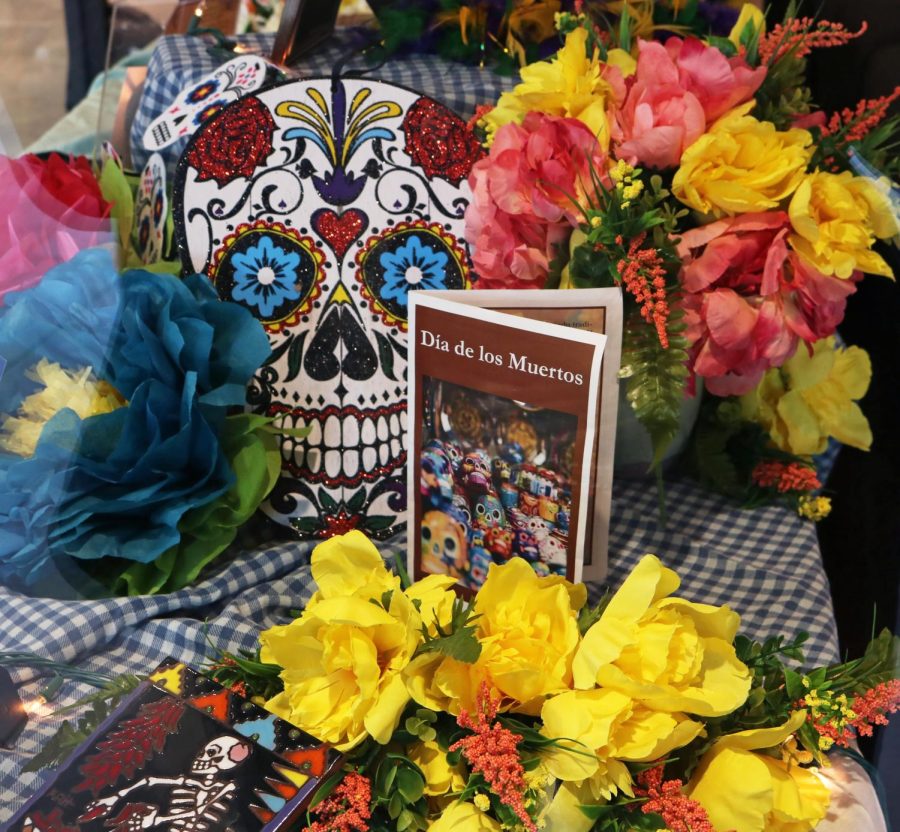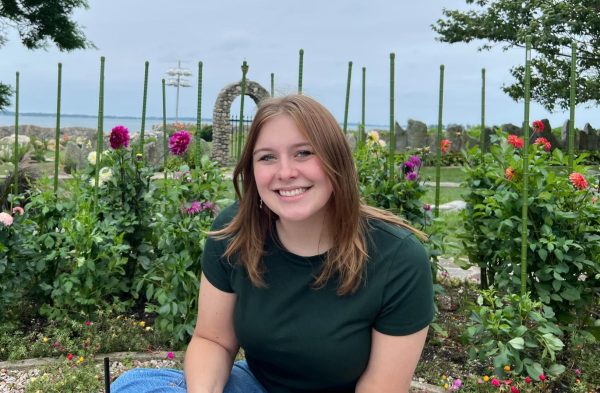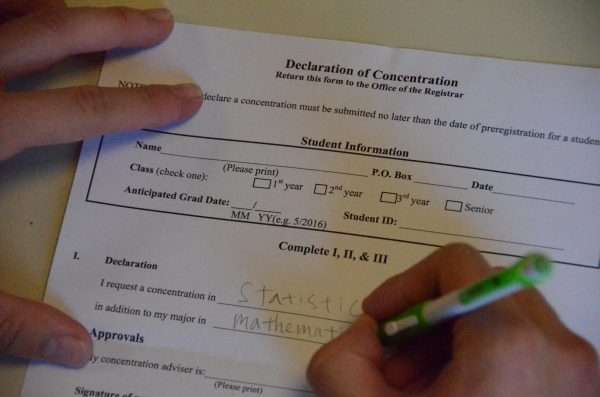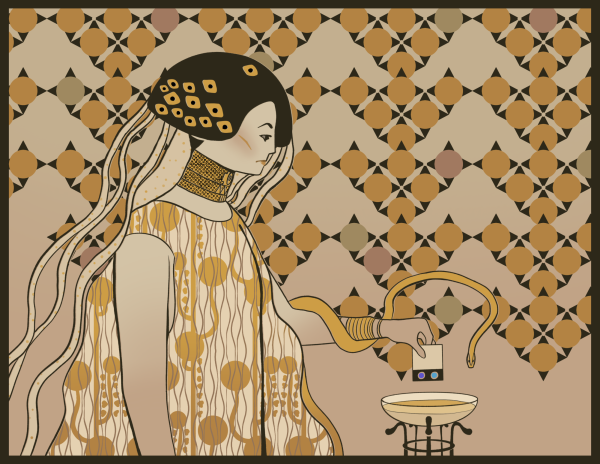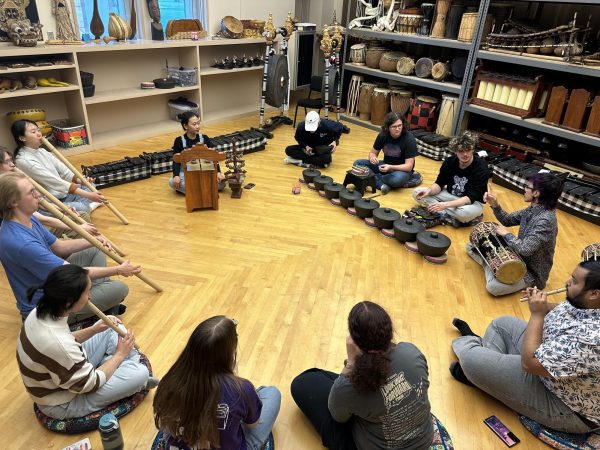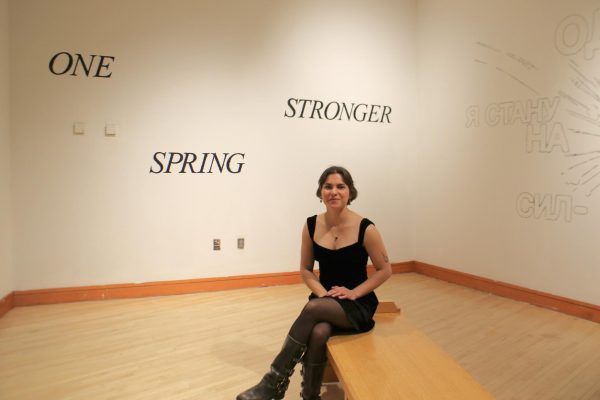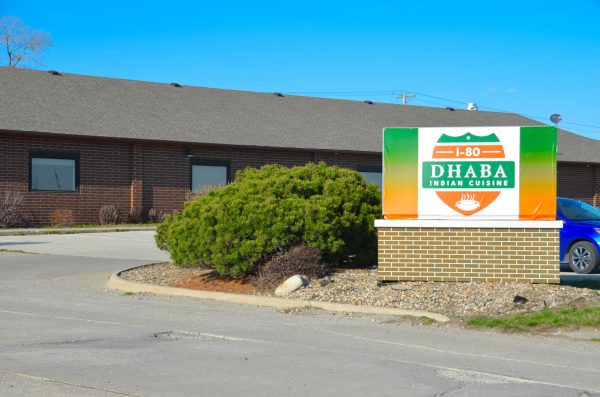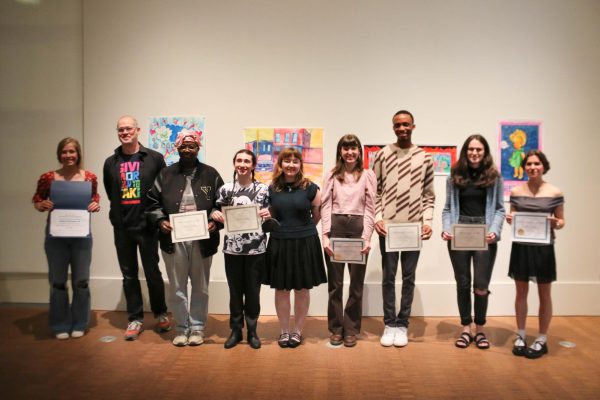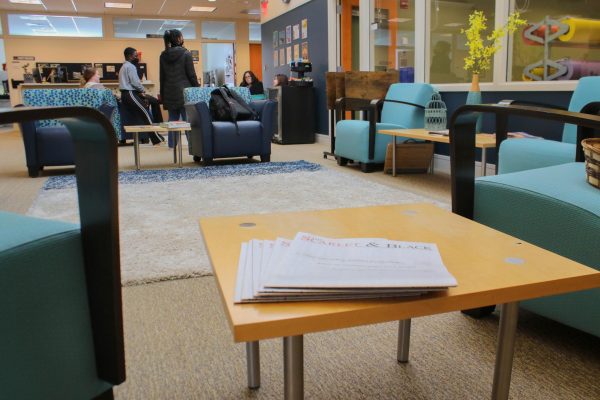Celebrating the Day of the Dead in Grinnell
Giovanna Romero `24 expresses gratitude for the altar as a visible space to celebrate her culture.
November 7, 2022
The Day of the Dead altar shines through the glass windows, vibrant colored paper lit by strings of Christmas lights. Framed photos of loved ones sit atop the altar, surrounded by mementos and trinkets dedicated to the souls of the dead. This year for Día de los Muertos, a traditional Mexican holiday celebrated from Oct. 31 to Nov. 2, Dr. Mirzam Perez, Professor of Spanish, led the organization of an altar located in the Global Living Room.
“Death is the one thing that connects all humans,” said Perez.
With the help of the Spanish House coordinator and the Institute for Global Engagement, Perez organized the construction of the altar, complete with the traditional three tiers to represent the sky, the earth and the underworld. The Grinnell Arts Council also provided a donation to cover the costs of the paper and craft supplies. Additionally, Perez asked students, faculty and staff to bring her any photos, mementos or other supplies that they would like to be placed on the altar. She said that she was both honored and worried when she received images of lost loved ones from various people on campus.
“There’s a responsibility we have,” said Perez. “I think it’s a testament of the trust they have in us as a community that we will honor them and respect them. And they feel safe.”
Today, Day of the Dead is celebrated across the globe. The holiday has changed in many ways and in different contexts. The holiday originated thousands of years ago with indigenous peoples such as the Toltecs and the Aztecs. Ancient Mexicans celebrated and honored the lives of the deceased, and they believed that on these days the dead were able to leave the spirit realm to visit their loved ones on Earth.
In the years before the pandemic, Perez constructed similar altars with her students, which she said was always a beautiful experience. “I do think that because of the pandemic and the toll that it’s had on our families and our friends, there was more of a concern about honoring [the dead],” said Perez. “After a very rough first half of the semester, I thought we needed something to build community.”
Giovanna Romero `24 is one of the co-presidents of the Student Organization of Latines (SOL). When Perez asked her to advertise participation in the construction of the altar to SOL members, Romero did not hesitate to say yes. To Romero, the opportunity presented “a good way to remember where we, Mexico, came from culturally.”
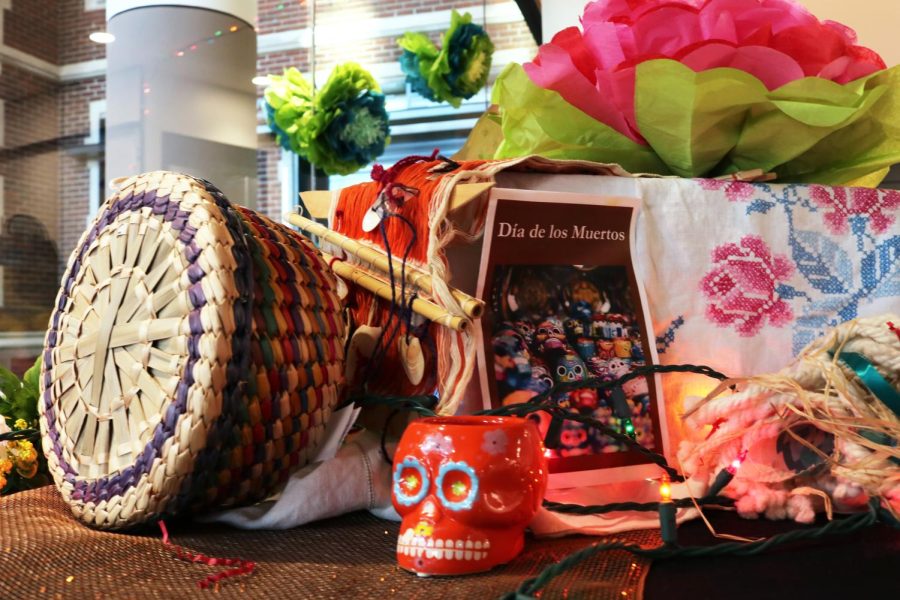
With the help of volunteers from SOL and from her Reggaeton class, Perez chose to place the altar in the Global Living Room, which sits on the north side of the atrium in the Humanities and Social Studies Center. For Perez, the Global Living Room was the perfect space both logistically and symbolically, especially because the altar is easily visible to passing students.
Romero, originally from San Antonio, Texas and whose parents are from Mexico, said, “sometimes it’s scary to put your culture on display.” Ultimately though, Romero said she has been happy with the student and faculty interaction with the altar and was excited to see many traditional elements like fruit, flowers, pictures of loved ones and lights.
For Romero, the Day of the Dead is “a time to be able to express grief in perhaps ways that aren’t very common.”
“The altar is a way of honoring these people that leave,” said Perez. As an immigrant from Honduras, Perez said she has been unable to return home to celebrate the holiday with her family. She said she misses the Day of the Dead traditions in her country of going to mass, gathering with loved ones and visiting the cemetery to clean and adorn tombstones. Because many immigrants have to move around the country, Perez said, “they also can’t go back to visit their ancestors, to honor their ancestors or to be in company of relatives at these times.”
The dead “don’t leave,” Perez said. “The altar becomes almost like a metaphorical visit to the cemetery … it is also a place for others to recognize those important things in our lives.”
Romero said that she also misses home “because there are a lot of people I do want to commemorate.”
Romero also expressed her gratitude for the altar and the dedication to celebrating her culture. “It’s one of the reasons why a lot of students of color are able to keep going on this campus — having faculty of color guide them and create a space where perhaps there wasn’t space for them before.”
Perez said that she wants to continue this project in the future and is especially hopeful because this year the project became a larger collaboration. “I could not do this alone,” said Perez. “I think this has been the most successful iteration because more people are helping us and are collaborating. And I thank them very much for this.”




























































